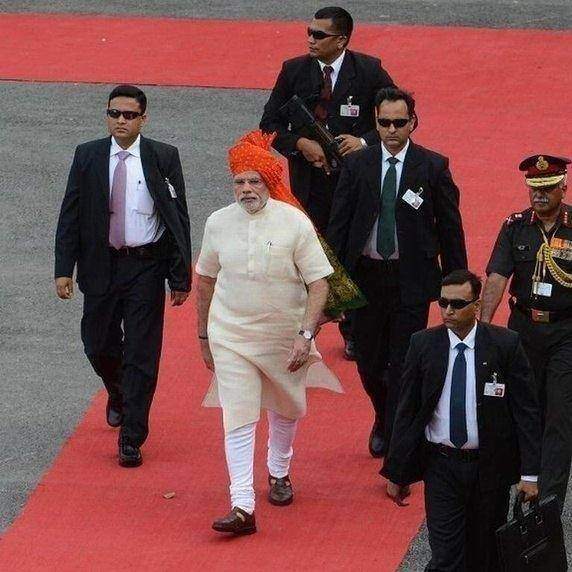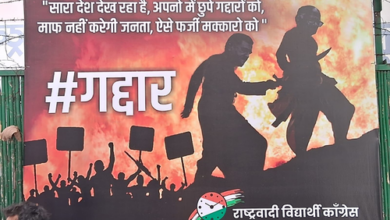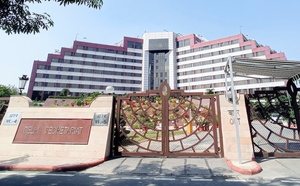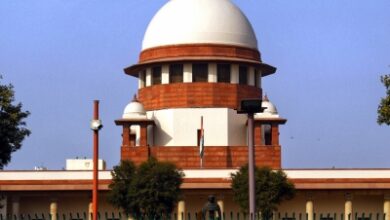PM’s Security, The Blue Book & The Budget

New Delhi, Jan 7: Recently the Law had been amended and notified last year. Yet, a question was asked in Parliament and the home ministry gave a reply in black & white in the Lok Sabha making it official that Prime Minister Narendra Modi is the lone Special Protection Group (SPG) Protectee.
DMK parliamentarian Dayanidhi Maran sought to know “the details of the current protectees under the Central Reserve Police Force (CRPF) and the Special Protection Group (SPG) in the country”. In response, Minister of State for Home G. Kishan Reddy said that the SPG protects only one person, without disclosing the name of the protectee though. He also did not give details of CRPF protectees and the VIPs whose security cover has been changed since 2014 – Maran had also sought to know this information – citing “security reasons”.
In the view of the budgetary allocation made for the SPG, a 3,000-strong force of special commandos, in the Union Budget 2020-21. The elite SPG force has got Rs. 592.55 crore for 2020-21, an increase of about 10 per cent in budgetary allocation.
This hike was unexpected in the sense that before the SPG Act was amended last year, the elite force was responsible for protection of four VIPs. The other three were Gandhis – Congress president Sonia Gandhi and her children Rahul Gandhi and Priyanka Gandhi Vadra.
The budgetary allocation for four SPG protectees in 2019-20 was Rs. 540.16 crore. This made per capita cost of security cover at Rs. 135 crore, that is, average cost of protecting the four VIPs – PM Modi and the three Gandhis – was Rs. 135 crore each. This means that per capita cost of SPG cover increases by almost 340 per cent this year.
The SPG came into being in the aftermath of the assassination of then Prime Minister Indira Gandhi. Her son Rajiv Gandhi was the prime minister at the time. The force was created for the protection of the prime minister and immediate family. Rajiv, Sonia and their children Rahul and Priyanka became automatic SPG protectees.
With the change of power in 1989, the VP Singh government withdrew SPG cover to the Gandhis. Rajiv Gandhi was assassinated in 1991. The Congress returned to power the same year. PV Narasimha Rao became the prime minister, apparently on the recommendation of Sonia Gandhi. Rao government restored SPG cover to the Gandhis. They continued to have SPG cover till November last year, when the Modi government decided to replace it with CRPF security cover.
All this while, the SPG budget continued to grow. It has almost doubled since 2015-15 when the Modi government first came to power. In 2014-15, SPG was allocated Rs. 289 crore which increased to Rs. 330 crore in 2015-16.
A sharp spike was seen in budgetary allocation for the SPG in 2019-20 to Rs. 535 crore, from Rs. 385 crore in 2018-19. It was an election year which meant all the four SPG protectees of the time – PM Modi, Sonia Gandhi, Rahul Gandhi and Priyanka Gandhi – were likely to undertake extensive tour of the country, thereby swelling the SPG bill.
With another 10 per cent hike in budgetary allocation in 2020-21, the cost of SPG cover for PM Modi has sharply grown to Rs. 592 crore. The daily basis cost of protecting the prime minister comes at about Rs 1.62 crore or about Rs 6.75 lakh an hour or Rs 11,263 a minute.
Being the ace campaigner for the BJP, PM Modi is the most sought after party leader even in state elections. This entails much more domestic tours for PM Modi. This was, however, not the case with his predecessor Manmohan Singh.
PM Modi incidentally has also undertaken more foreign trips than Manmohan Singh during his tenure. Manmohan Singh undertook 93 foreign visits in 10 years. Modi had already crossed this number in less than six years. PM Modi’s domestic and foreign tours have their bearing on SPG cover cost.
The amended SPG Act says the elite force is responsible for the security of the serving prime minister and the immediate family staying at PM’s official residence, and the former prime minister and the immediate family for a period of five years since leaving the Prime Minister’s Office.






